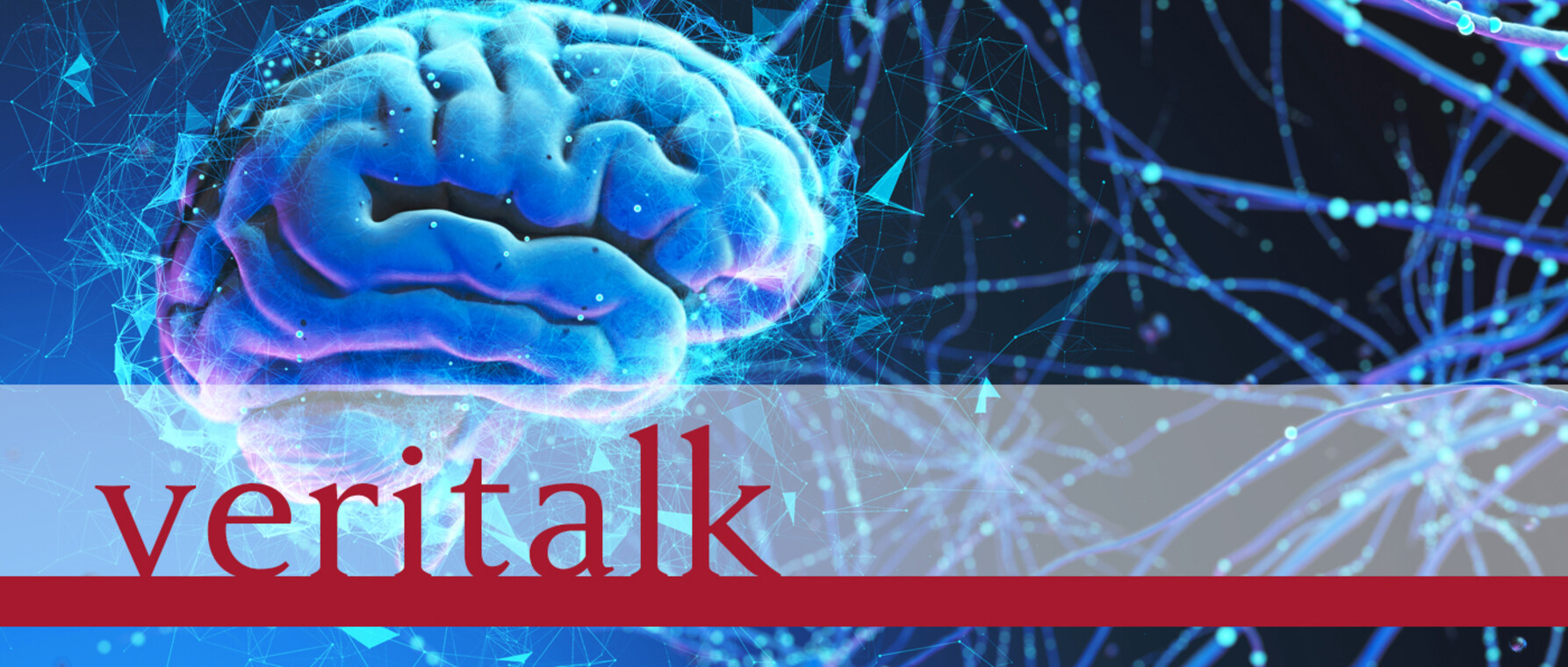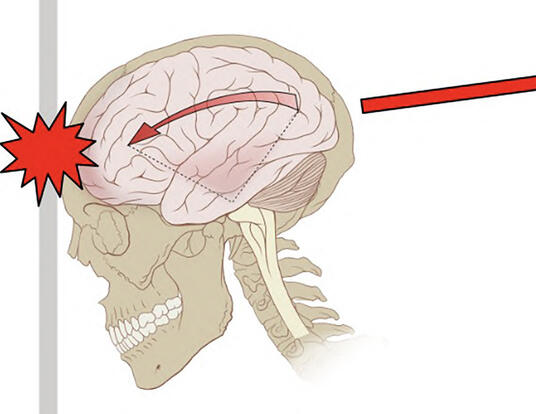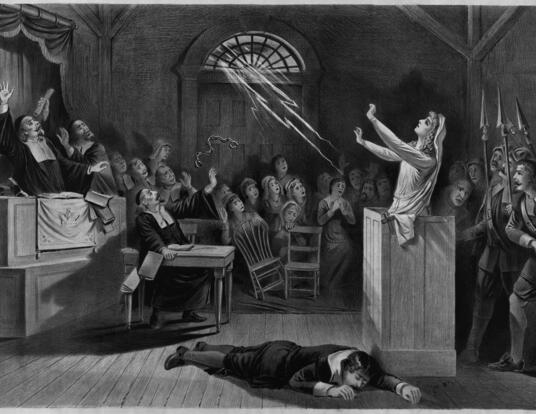Flavor on the Brain

When you taste the subtle flavor of a perfectly brewed cup of coffee, or smell the funk of an aged blue cheese – you don’t just experience those flavors with your taste buds and nose, you experience them with your brain! Neuroscience PhD Jess Kanwal says that our brain’s ability to combine taste and smell is just one example of how our brains are able to mix and match senses – with very interesting results.
Interview Highlights
"Neuroscientists think that the senses are actually connected much more, and there's a lot more crosstalk between them, early on in development. But usually as we grow older, those connections kind of prune away or they kind of disconnect. And people think that, perhaps, one reason certain people have synesthesia is because those connections didn't quite prune away enough." - Jess Kanwal on synesthesia.
"So imagine that you are watching your favorite cooking show and you really want to experience the flavor of the food that someone just made. So people are now thinking about how can we deliver the right amount of smell and taste to stimulate somebody's senses so that they can experience what they may be seeing - or experience of flavor that they may not actually be getting." - Jess Kanwal on the future of flavor and neuroscience.
Full Transcript
Anna Fisher-Pinkert: From the Harvard Graduate School of Arts and Sciences, you’re listening to Veritalk, your window into the minds of PhDs at Harvard University. I’m Anna Fisher-Pinkert.
For the last few episodes, we’ve been talking about sensing. How we taste, smell, feel, and see the world.
Some of my happiest memories involve food. Baking a bittersweet chocolate cake with my mom, drinking fragrant matcha in Japan, or eating briny oysters on Cape Cod. So nothing makes me sadder than getting a cold. With my nose stuffed up - all of those beautiful flavors just . . . go flat.
Jess Kanwal: So, flavor is actually our brain's ability to combine both taste and smell.
AFP: This is Jess Kanwal. She earned her PhD in Neuroscience from the Graduate School of Arts and Sciences at Harvard University. And Jess actually studies two things: How taste and smell combine in the brain and where that combining happens.
JK: So, first, information is processed through independent senses and it goes through different layers of the brain. And then it finally combines pretty deep in the brain. And in humans, this is an area of our cortex called the orbital frontal cortex. We associate this area with a place that is often linked to our ability to perform higher cognitive functions. But, it turns out that a lot of animals, aside from mammals, don't actually have this area of the brain. And so one of the things I was interested in is: Can they still perceive flavor? And if so, how is their brain able to do that?
AFP: So here’s the big question: Is the perception of flavor something that is unique to creatures with big, complex brains, like humans, or can even a very basic brain perceive flavor?
Watch Jess Kanwal present at Harvard Horizons 2019
JK: And so, I turned to look at the fruit fly larva, which is this tiny little maggot. It has one million times fewer neurons, or brain cells, in its brain compared to ours. I like to think of them as voracious eating machines. They start off as about a few millimeters long, but within four to six days, they will grow almost 100 times in volume. And the reason for that is because they are constantly eating. They have to eventually undergo metamorphosis. And while they're in that pupa stage, when they are developing and changing into an adult fly, they can't eat. Right? So they need to use their larva stage to store as much nutrients, as much fat, as they can so they can make it through the whole pupa stage, eventually, and become an adult. And so, eating and finding food and using smell and taste are extraordinarily important for their survival. And that is pretty much, you know, one of the key behaviors that they need to perform, and that they do perform, during the larva stage
AFP: So Jess takes these highly food-motivated creatures and puts them in, essentially, a foodie arena.
JK: Imagine you have an arena. It's about nine inches by nine inches, a square plate. On this plate, there is a type of material called agarose. You can think of it kind of like jello. And we put this on the surface of the plate, and then the larvae go on top of this agarose. And this is a material they just like to walk on. So it makes them feel a little bit more comfortable. And then we create this gradient or distribution of smells or tastes across the arena. So you can imagine on one end of the arena, you have a really high intensity or high concentration of this attractive smell. And on the opposite end, you have a really low concentration.
AFP: Jess makes three different kinds of arenas for the larvae: one with a smell gradient, one with a taste gradient, and one with both taste and smell.
JK: And so we placed larvae in the middle, and we have a camera on top, and we literally just watch how they move over the course of 20 minutes or so. At first they will kind of meander a lot. They'll explore the area. They may not really know what direction to go in. But, surprisingly, within five to ten minutes, they will figure out which direction is going to lead to the attractive taste or the attractive smell.
AFP: Basically, Jess is watching these larvae wriggle their way to the goal line. And she wants to know: are they going to be any faster at finding the desired food when they get to use both taste and smell?
JK: So when you have both taste and smell, they nearly double in their efficiency to navigate towards that region of attractive smell and taste. And so that, to us, is an indication that they must be combining these two cues somewhere in their brain. Although, initially, we didn’t know where this was happening, or how.
AFP: So having a flavor - a combination of taste and smell - turns the larvae into tiny Abby Wambachs, driving straight for the goal. This result actually opens up even more questions. If a creature with a very basic brain can combine taste and smell to perceive flavor. . . where exactly in the brain is it making that combination happen? To figure that out, Jess did another experiment.
JK: We have a microscope setup, and we have a little device called a microfluidics chip. You can think of this as kind of a bunch of small channels that were designed specifically for the larva’s size. So there is a small little channel, the lava gets pushed into it and then it kind of gets stuck towards the end. And so it can't really move, but its nose and its mouth are still exposed to tastes and smells. And so we can flow mixtures of taste, smell, or the combination of the two past larvae's nose and mouth.
AFP: Jess has already prepared the transparent larvae with a special fluorescent protein. When she shines specific color light into their brains, she can see them light up with activity.
JK: And this protein will glow brighter and brighter the more active the cells become. So essentially, imagine looking at hundreds of neurons, hundreds of glowing circles or dots. And as you deliver certain smells or tastes, different ones will flash, and in different parts of the brain. And so, you can actually see the activity of all the neurons in the brain, and it's like kind of like watching a Christmas light show. You know, you see these flashes of green and red light, and they're telling you something about where in the brain the larva is combining smell and taste.
And so when I did this, I was very excited to find flavor neurons, neurons that respond both to smell and taste. And what was really surprising was where these neurons were located in the brain. So as I mentioned earlier, the smell and taste pathways have generally been thought to be separate initially, and then combined deeper in the brain. And so we thought in the larva, something like this might also be true. However, it turns out that the flavor neurons were located right at the entryway to the brain. And so, his is actually surprising because it is in a region of the brain where people had thought these neurons only respond to smells, and these neurons in this brain region have been studied for decades. So it was very surprising to see that they also are modulated by tastes.
And so that was really interesting because it suggests this new and different way that the larva is combining smell and taste. During the course of my PhD, other papers have now come out that are studying this in mammals as well. And they find a similar thing where actually it's not just senses being combined really deep in the brain, as has typically been thought, but actually even in mammals, there seems to be very early combination of different senses. And what's also cool is that it's not just true for smell and taste, but it turns out that vision and sounds, as well as things like temperature and smell, or taste and touch, all these different senses are having a lot more crosstalk in early sensory brain regions compared to what we had thought.
AFP: In middle school, I remember seeing this neat map of the brain divided into regions regions - one for taste, one for smell, one for vision - so I asked Jess if that map was kind of. . . wrong.
JK: So, that’s a great example. I mean, even I teach introductory neuroscience here and we still have pictures like that where you have a nice, clearly divided brain into certain regions: This is the smell region. This is taste. This is sound. This is vision. But, you know, you see those areas, and typically students are taught that each area will first extract important aspects of that particular sense. In smell, we need to extract information about how intense the smell is, so the concentration, or potentially what type of smell we're experiencing.
AFP: So the idea is that the neurons in the smell region of the brain are just doing smell-related work.
JK: But what this recent work, what my research and also the work of others, is now showing is that actually that's probably not the only thing that neurons in these areas are doing. In fact, they are talking to each other. There's a lot of crosstalk between the different senses and they are not just extracting information about a single sense, but taking into account how does that smell, or how does that taste, associate or combine with the other senses that that you are experiencing as you're going about your daily life?
AFP: There are actually people who scientists suspect have even more crosstalk than usual - they have what’s called synesthesia. Synesthetes have these really cool combo senses - some can “hear” color, some can “see” music.
JK: Neuroscientists think that the senses are actually connected much more, and there's a lot more crosstalk between them, early on in development. But usually as we grow older, those connections kind of prune away or they kind of disconnect. And people think that, perhaps, one reason certain people have synesthesia is because those connections didn't quite prune away enough. And so, instead, people are experiencing a lot more crosstalk between the senses that normally gets pruned. And so they start to have these interesting experiences where they can see sounds, even. Playing music might elicit this beautiful array of different colors in front of them. Or, just looking at different colors on a page can suddenly create certain sounds in their mind.
AFP: Even if you don’t have synesthesia, paying more attention to how our brain combines senses could have some really big real-world applications.
JK: There is a really interesting new area called neurogastronomy. This is an area that's trying to bring together chefs and neuroscientists (as well as chemists and other types of biologists) and really kind of figure out ways that we can rewire the brain to perceive foods differently. The reason that this area is really important is because there are a lot of conditions where people's day-to-day quality of life gets affected with their loss in ability to taste or smell. So, for example, patients who have undergone cancer, chemotherapy treatment or often Parkinson's disease patients, Alzheimer's disease patients, sometimes those who have experienced stroke or certain types of head trauma, can often have effects or symptoms where they no longer perceive flavor of food in the same way as they used to. It affects their day to day quality of life. But it's not so critical that the doctors are developing medicine or researchers are developing medicine to treat those aspects. But if we can understand how our brain combines smell and taste and the structure that it uses to do this, we can hopefully use that information and knowledge to help us improve or understand how we can fix the brain when these two senses are not combining properly any more and leading to conditions where people can no longer experience the rich, wonderful flavor of all the foods they eat.
AFP: There’s also another application.
JK: We could use this to kind of extend our reality. So imagine that you are watching your favorite cooking show and you really want to experience what the flavor of the food that someone just made is on the show you're watching. So people are now thinking about how can we deliver the right amount of smell and taste to stimulate somebody's senses so that they can experience what they may be seeing - or experience of flavor that they may not actually be getting. So you can also think of an interesting situation where maybe you are eating a really nutritious piece of broccoli. Not the most flavorful thing to eat, right? But can we use in what we know about smell and taste to trick our brain into thinking that it actually tastes like a delicious piece of chocolate! That would be super awesome!
AFP: That's awesome and also really disturbing. [laughter] I don't know if I want that future! That's really cool. At the same time, we're talking about like an ability to understand our brains to the point that we can change what reality feels like.
JK: Yeah. Yeah. So certainly you may opt out of this reality, but perhaps, you know, this can again be useful for others. For example, there is a growing obesity epidemic in the U.S. and you know, maybe for those people it could be useful or helpful to instead of having this urge to eat foods that are high in fats or sugars, we trick them into eating more nutritious foods. So there are various applications. Or it could be useful to get your nutritious daily content in, but then still experience the nice, you know, sweet flavors of desserts.
AFP: That’s not bad either.
JK: Yeah!
AFP: I have always taken for granted that I can trust my senses. Touch, taste, smell, sight - I believed that my brain took in the cold, hard facts of the world around me, and gave me credible information. But after talking with Jess, and Emilie, and Ryan - I’ve come to the conclusion that my senses are more complex, and less reliable. And maybe that’s not so bad. The crosstalk between our senses, our ability to process sensory information differently from each other, it’s all part of the experience of being human. And maybe you, right now, are hearing my voice differently than the person next to you. And that’s . . . kind of great.
This is the final episode of our series on Sensing. You can see those tiny light-up brains on our website: gsas.harvard.edu/veritalk. If you want even more Veritalk - you can always go back through our archives - we have episodes about Monsters, Cities, and more. If you liked this episode, I think you’ll really like our series on Food - we learned about everything from the origins of tikka masala to the tiny microbes that help us digest our food. Go check it out!
We make this show because we love talking to really smart people who are finding new ways to understand the world. If you like listening to this show as much as we love making it, rate us and leave us a review on Apple Podcasts.
Veritalk is produced by me, Anna Fisher-Pinkert.
Our sound designer is Ian Coss.
Our logo is by Emily Crowell.
Our executive producer is Ann Hall.
Special thanks to Jess Kanwal and the PRX Podcast Garage.
Jess Kanwal’s research is funded by a National Science Foundation Graduate Research Fellowship Award, and a National Institutes of Health F31 Grant.
Logo by Emily Crowell
Get the Latest Updates
Join Our Newsletter
Subscribe to Colloquy Podcast
Simplecast





